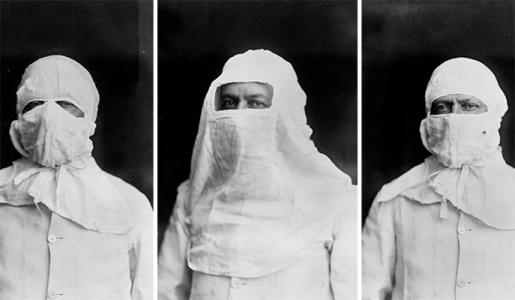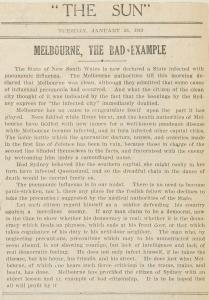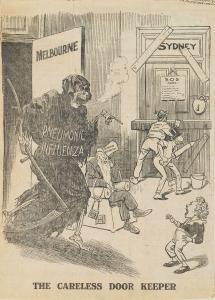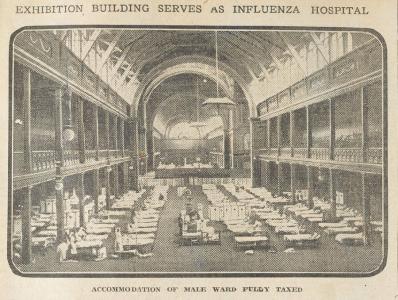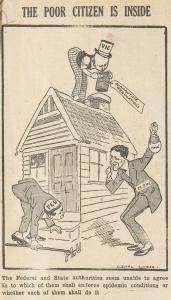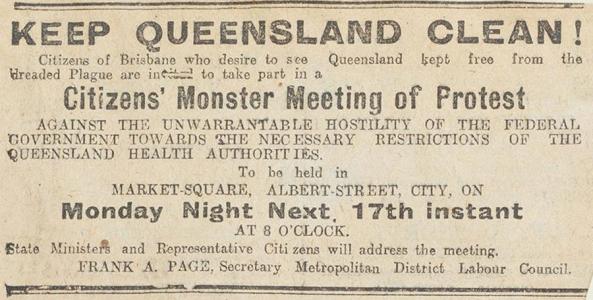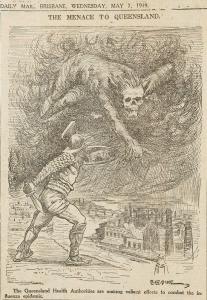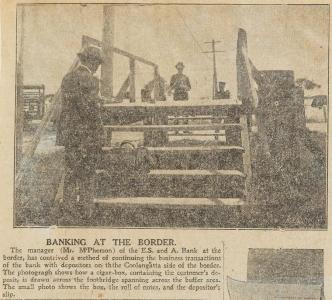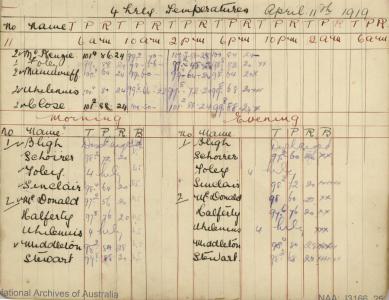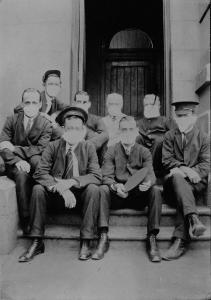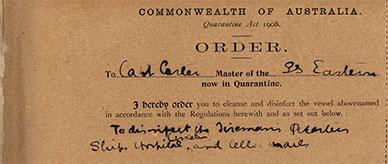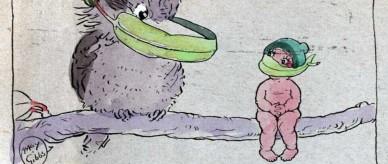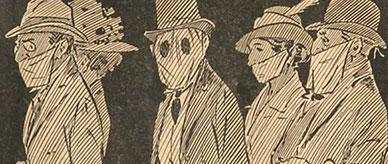The Spanish flu pandemic remains one of the deadliest pandemics in human history. From February 1918 to April 1920, it infected a third of the world’s population and killed tens of millions of people.
Records in the National Archives show that Australia’s response to the virus was marked by disagreements between state and federal governments.
Preparing for the pandemic
Australia remained free of Spanish flu throughout 1918 thanks to our strong quarantine measures. Ships arriving from infected countries had to quarantine for 7 days, with patients subject to ‘daily thermometer parades and daily inhalation with steam plus two per cent zinc sulphate solution along recognised lines’.
But as the virus wreaked havoc across the world, Australia had to prepare for an outbreak. Lacking a federal health department, the Commonwealth government summoned each state’s health minister, chief medical officer and other medical officials to a conference in Melbourne in late November 1918.
Among the conference resolutions was an agreement that a state government must notify the Commonwealth government as soon as they detected a case of Spanish flu. The Commonwealth would then take control of all traffic in and out of the state. Residents would need a permit to leave, except for those living within ten miles of the state border, who could travel back and forth as long as there were no cases in their area.
The virus arrives
Australia’s first cases of Spanish flu were detected in Melbourne in mid-January 1919. But the Victorian health department didn’t report these cases to the Commonwealth for about a week.
By the time Victoria was declared an infected area on 28 January, there were 350 infections in the state and the virus had already spread by train to Sydney.
The Sun newspaper in Sydney published a scathing editorial, declaring:
Melbourne has no cause to congratulate itself upon the part it has played. Nero fiddled while Rome burnt, and the health authorities of Melbourne have fiddled with new names for a well-known pandemic disease while Melbourne became infected and in turn infected other capital cities.
With the virus in Australia’s two most populous states, gatherings were discouraged and theatres, hotels, dance halls and churches were closed. People began regularly inhaling antiseptic fumes and wearing masks in public – even though the Commonwealth Director of Quarantine thought that masks were ‘useless and even dangerous’.
Queensland goes rogue
New South Wales’ status as an infected state meant that only residents living within 10 miles of the border were allowed to cross into Queensland.
But the Queensland Government thought the 10-mile buffer lines were ‘undefined and unguarded’, presenting a risk that Queenslanders could cross into New South Wales, become infected and return to spread the virus anywhere in the state.
On 1 February, Queensland closed its southern border to everyone, even people living inside the 10 mile buffer zone. This was a clear breach of the November agreement, and a few days later the Commonwealth renounced the agreement, leaving the states to handle their own quarantine and restrictions at land borders. (The Commonwealth continued to control quarantine at ports.)
Queensland police were stationed at crossings along the border to enforce mandatory examinations and detain and isolate anyone who might be infected.
The sudden closure of the northern border left many Queenslanders stranded in New South Wales. The situation was particularly bad at Tenterfield, the last railway stop before the Queensland border. Around 700 people on trains from Sydney were ordered to stay there, leading to a temporary quarantine camp being set up in the showgrounds. Some passengers accepted rail passes back to Sydney, while the rest spent 7 days in a tent before they were allowed to enter Queensland.
Queensland’s hard-line approach kept them free of the Spanish flu for several months. But in May 1919 the virus was detected in Queensland, and the state government reluctantly reopened the border with New South Wales.
Transportation takes a hit
Western Australia also took an uncompromising approach to their borders, shutting down the transcontinental railway that connected the state with eastern Australia. The trains were out of action for several weeks until adequate quarantine was introduced.
Meanwhile, strict quarantine regulations at ports impacted shipping between states, leading to local shortages of coal, flour and other goods.
In April 1919 the acting prime minister telegrammed the premiers of Queensland, Tasmania and Western Australia stating that until they were prepared ‘to withdraw their quarantine regulations, a proportion of the tonnage employed in the trade to their respective ports would be removed to other trade routes offering more continuous employment’.
A test for the new nation
The Spanish Flu pandemic exposed tensions in Australia’s new Federation as the states squabbled with each other and the federal government.
Fortunately, the global population developed a natural immunity to the virus. The flu pandemic was over by the end of 1919, but not before claiming the lives of around 15,000 Australians.


